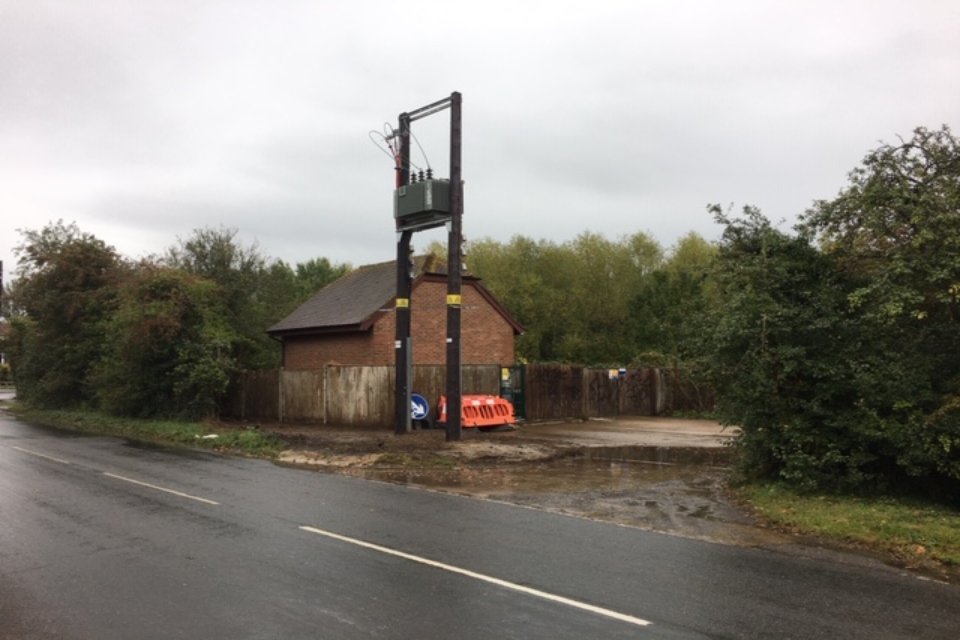Middle Medway flood resilience scheme
Updated 22 March 2021
Background
Many homes where the Rivers Medway, Teise and Beult join are at very significant risk of flooding. The Environment Agency, Kent County Council (KCC) and Maidstone Borough Council (MBC) have worked in partnership to deliver the Middle Medway flood resilience scheme (MMFRS). The scheme aims to reduce flood risk to homes at ‘very significant risk’ by installing Property Flood Resilience (PFR) measures to individual properties.
Scheme outline
The scheme started in 2017 with surveys of over 460 properties across 8 parish council areas:
- Yalding
- Collier Street
- Hunton
- East Farleigh
- West Farleigh
- Wateringbury
- Marden
- Nettlestead
These surveys assessed which properties were suitable for PFR measures. These measures include flood doors, flood gates and air brick covers.
The scheme was then split into 2 phases:
- phase 1a was a pilot scheme to demonstrate a variety of PFR measures to build understanding and confidence within the community. Phase 1a was completed early in 2018 and included 28 properties
- phase 1b included the remaining 255 eligible properties where the owners had expressed an interest in joining the scheme
In total, the Environment Agency has installed PFR measures to 256 homes across the middle Medway villages. The scheme has cost £1.54 million. Up to £7,500 per property came from the government’s Flood Defence Grant in Aid (FDGiA). The Southern Regional Flood and PCoastal Committee also provided an extra £195,000 to the project.

Flood barriers helping to reduce the risk of flooding to individual properties.
One challenge for the project has been ensuring that the power supply for pumps will continue during a flood. At Yalding, 2 electricity substations are within the floodplain and power can be turned off during floods. UK Power Networks is working to improve the flood resilience of the substations to ensure that the power stays on.

Raised substation at Burgess Bank, Yalding.
PFR schemes rely on the participation of homeowners so community engagement has been critical to the success of the project. In Phase 1b, 85% of residents at risk of flooding agreed to have the measures installed.
Across the country, the average take up of residents in PFR schemes is 70%. The project would not have been so successful without the help and support of the Parish Councils. The project team would like to say a massive thank you.
Next steps
The scheme was completed in November 2020.
Residents must carry out regular maintenance of their measures and test them at least once a year by deploying them.
Annual maintenance includes:
- keeping flood barrier seals clean
- cleaning anti-flood airbricks - remove the front cover and clear any debris from inside
- testing portable and sump pumps - remove any debris from sumps
- checking non-return valves are free from dirt and close properly
Correct deployment of the measures is essential. Make sure any tools needed for deployment are kept in a safe and accessible place.
If you have any questions or would like to request more information about this scheme please email: [email protected]
You can request more information on local flood plans or becoming a local flood warden by contacting the local Environment Agency flood resilience team by email [email protected]
Medway catchment projects
The Middle Medway Flood Resilience Scheme is part of the Medway Flood Action Plan developed by the Medway Flood Partnership established in January 2017. It brings together local partners, national agencies, non-government organisations and community representatives to focus on reducing the risk of flooding from non-tidal rivers and surface water in the Medway catchment.
More information can be found on the River Medway Partnership page
Other schemes being developed in the River Medway catchment are:
- Leigh Expansion and Hildenborough embankment scheme
- East Peckham flood alleviation scheme

